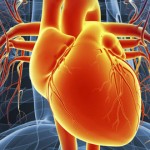“All of these issues are relevant for really all patients, and all Americans, in terms of their CV risk,” he said, “but perhaps in particular those with rheumatologic disorders, where inflammation may be contributing to their increased cardiovascular risk.”
LDL, HDL & Rheumatic Disease
LDL levels in the setting of rheumatic disease is a tricky matter, said Christina Charles-Schoeman, MD, MS, professor of medicine and chief of rheumatology at the University of California, Los Angeles.
For patients with systemic inflammation from rheumatoid arthritis (RA), lower LDL and total cholesterol levels have been associated with higher, rather than lower, CV risk. This situation has come to be known as the lipid paradox.
Work by Dr. Charles-Schoeman and her group found this paradox may be caused by the effect of disease activity degrading cholesterol esters, leading to lower serum cholesterol levels. Treatment with tofacitinib decreases this degradation and increases cholesterol levels, researchers have found.6
Investigators have begun to focus on non-traditional lipid parameters, such as the effects of rheumatic disease activity on the function and structure of high-density lipoprotein (HDL). HDL has two major functions that combat atherosclerosis: its antioxidant function and its effect on reverse cholesterol transport, the removal of excess cholesterol from the peripheral tissues.
HDL, researchers have found, doesn’t adhere only to cholesterol, but to many proteins, some of which can be modified in active RA. The protein profile of dysfunctional, pro-inflammatory HDL is different compared with anti-inflammatory HDL, including some involved in immune response, complement regulation and other functions important in inflammatory disease, Dr. Charles-Schoeman said.
One trial, TEAR, found that—regardless of the therapy involved—“if you decrease inflammation, you have improvements in the HDL function profile,”7 she said. This finding points to an important new direction in treatment.
“Treatment of active RA, while associated with increases in traditional cholesterol levels, may be associated with improvement in non-traditional lipid parameters including HDL function and structure,” Dr. Charles-Schoeman said. “Further CV studies are certainly warranted to evaluate further the relationship of these lipid changes to CV events.”
Thomas Collins is a freelance medical writer based in Florida.
References
- Robinson JG, Farnier M, Krempf M, et al. Efficacy and safety of alirocumab in reducing lipids and cardiovascular events. N Engl J Med. 2015 Apr 16;372(16):1489–1499
- Sabatine MS, Giugliano RP, Keech AC, et al. Evolocumab and clinical outcomes in patients with cardiovascular disease. N Engl J Med. 2017 May 4;376(18):1713–1722.
- Bhatt DL, Steg PG, Miller M, et al. Cardiovascular risk reduction with icosapent ethyl for hypertriglyceridemia. N Engl J Med. 2019 Jan 3;380(1):11–22.
- Ray KK, Bays HE, Catapano AL, et al. Safety and efficacy of bempedoic acid to reduce LDL cholesterol. N Engl J Med. 2019 Mar 14;380(11):1022–1032.
- Ridker PM, Everett BM, MacFadyen JG, et al. Antiinflammatory therapy with canakinumab for atherosclerotic disease. N Engl J Med. 2017 Sep 21;377(12):1119–1131.
- Charles-Schoeman C, Fleischmann R, Davignon J, et al. Potential mechanisms leading to the abnormal lipid profile in patients with rheumatoid arthritis versus healthy volunteers and reversal by tofacitinib. Arthritis Rheumatol. 2015 Mar;67(3):616–625.
- Charles-Schoeman C, Yin Lee Y, Shahbazian A, et al. Improvement of high-density lipoprotein function in patients with early rheumatoid arthritis treated with methotrexate monotherapy or combination therapies in a randomized controlled trial. Arthritis Rheumatol. 2017 Jan;69(1):46–57.

